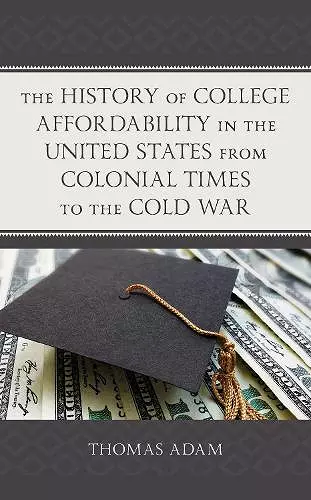The History of College Affordability in the United States from Colonial Times to the Cold War
Format:Hardback
Publisher:Lexington Books
Published:13th Oct '20
Currently unavailable, and unfortunately no date known when it will be back

This book examines how tuition and student loans became an accepted part of college costs in the first half of the twentieth century. The author argues that college was largely free to nineteenth-century college students since local and religious communities, donors, and the state agreed to pay the tuition bill in the expectation that the students would serve society upon graduation. College education was essentially considered a public good. This arrangement ended after 1900. The increasing secularization and professionalization of college education as well as changes in the socio-economic composition of the student body—which included more and more students from well-off families—caused educators, college administrators, and donors to argue that students pursued a college degree for their own advancement and therefore should be made to pay for it. Students were expected to pay tuition themselves and to take out student loans in order to fund their education.
Thomas Adam has provided an invaluable historical perspective on the role of college education in the United States. At a time when ‘college for all’ has become a little-understood mantra in electoral politics, Adam shows how American attitudes toward undergraduate education have changed radically. Over the course of the last two centuries, Americans moved from understanding college as a public good, a preparation for public service, to seeing college as a personal interest, an investment in the student’s future career. The question that now arises is: what will justify universal college education in the twenty-first century? This is an important book.
-- Stanley N. Katz, Princeton UniversityThe History of College Affordability in the United States from Colonial Times to the Cold War is a well-researched, comprehensive overview of how U.S. college tuition was funded from the beginning of the country through WW II and the G.I. Bill. The book offers insights into how college student support might be structured. It will be of interest to historians, educators, and policy makers.
-- Sam Stern, Oregon State UniversityIn this interesting and informative study, Thomas Adam argues persuasively that the 1920s and 1930s marked related shifts in undergraduate demography, tuition charges, and financial aid policies that profoundly shape American higher education today.
-- Bruce A. Kimball, Ohio State UniverISBN: 9781498588430
Dimensions: 228mm x 161mm x 22mm
Weight: 494g
214 pages